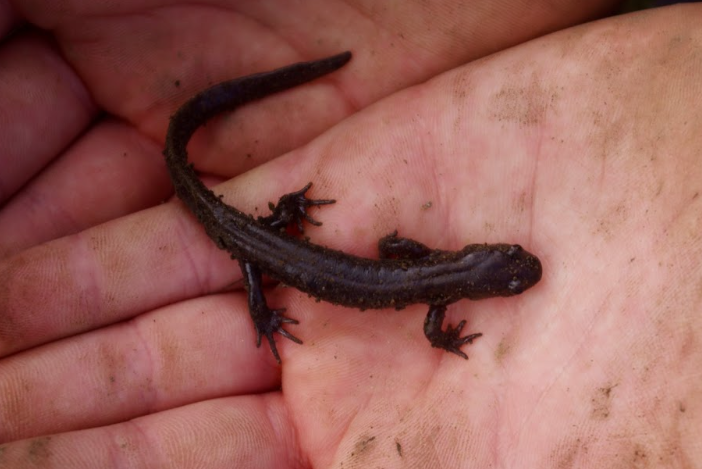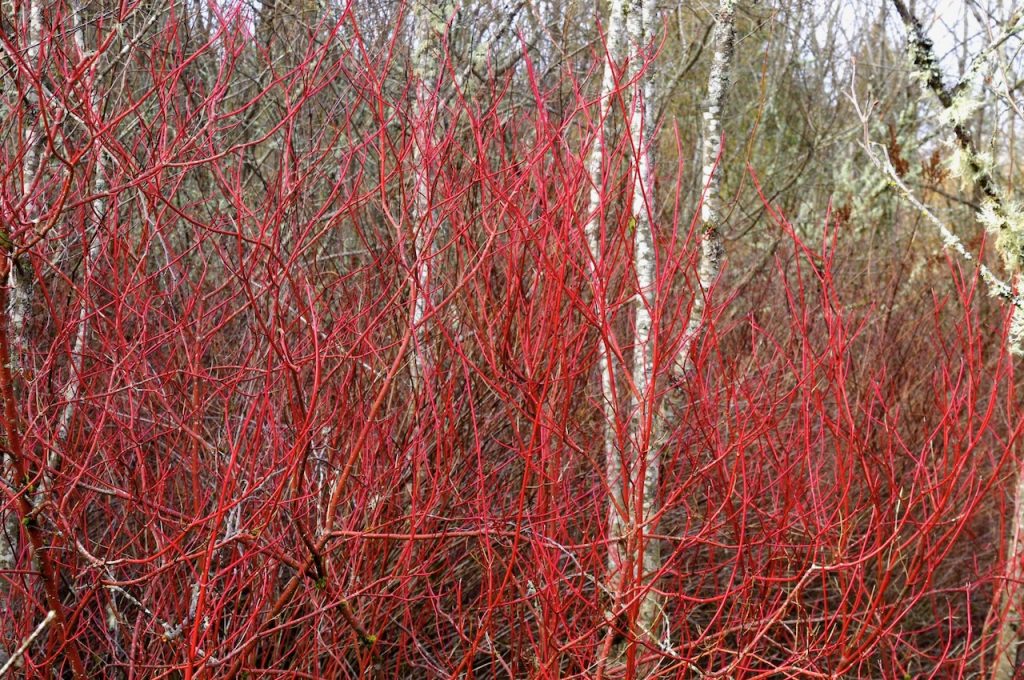by John Sparks
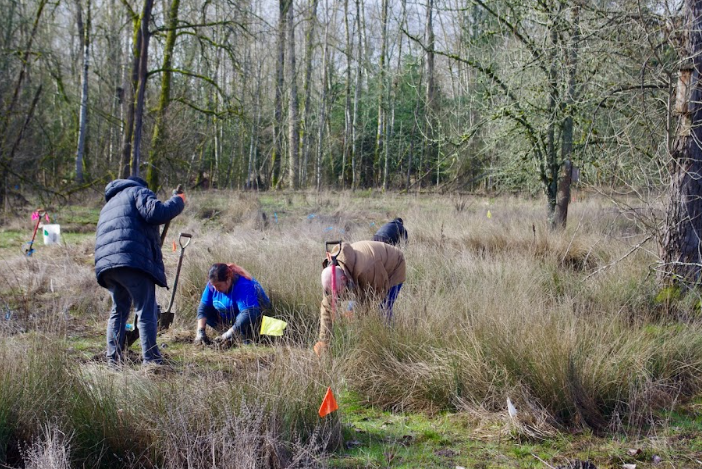
Oaks Bottom’s North Meadow is off limits to the general public while efforts are underway to fully restore the natural wetland habitat. This 50-acre area of seasonal pools had been filled with rubble from the Stadium Freeway project by the Drake Company, which owned the land. Since the freeway, now known as I-405, was essentially a huge trench routed through a built up urban area, construction there began with the demolition of hundreds of buildings. Drake was intent on using the space for a major development but needed to get the rezoning permits. When too many strings were attached to these, Drake sold out to the City of Portland in 1969, a purchase funded from both state and federal sources. The broken up concrete was covered with a rather thin layer of clay, but the status of the area was still under debate. In the 1980s, however, the North Meadow became part of the Oaks Bottom Wildlife Refuge, whose creation was promoted by The Nature Conservancy, the Portland Audubon Society, and the Sellwood-Moreland Improvement League (SMILE), among others.

Over the years, various restoration efforts at the North Meadow have encouraged the evolution of ash swales, oak peripheries, seasonal sedge/bulrush pools, and a cattail pond. This year, Friends of Oaks Bottom has participated in two Portland Parks work parties involved in establishing a greater variety of native plants. Winter plantings can be risky, especially if there is a long, hard freeze soon after, but at the elevation of the Willamette River, this is unlikely. The January work party included some potted plants such as thimbleberry, monkey flower, and snowberry as well as the bulbs of great camas and wapato.
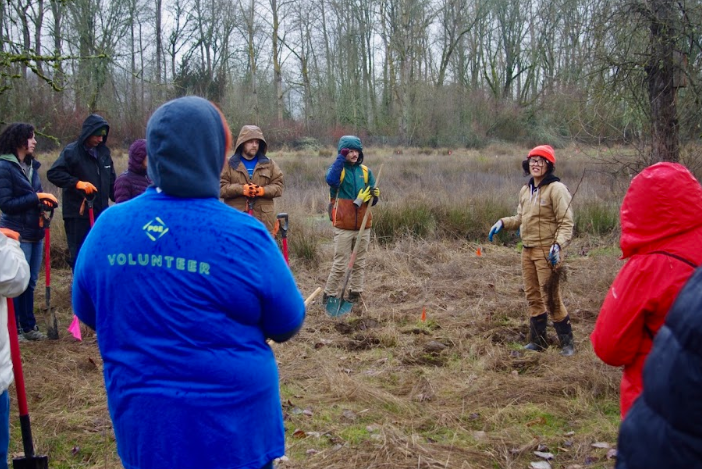
On the most recent work party, on March 11th, we planted bareroot saplings of still dormant Pacific ninebark, red flowering currant, red osier dogwood, beaked hazel, thimbleberry, and western spiraea. There were 554 plants in all and, with 30 enthusiastic volunteers, we got more than three-quarters of them in the ground before calling it a day.

Anne-Marie Santos, the Portland Parks stewardship coordinator who oversaw both of these volunteer plantings, explained that while large numbers of bareroot plants are easy to transport (they’re very light in weight), their survival rate is reduced by root exposure to the open air, which dries them out. Bareroot shrubs are grown at a nursery and dug out of the ground in fall. Soil is shaken from the roots, and the plants are packed in large bags with some sawdust and then refrigerated. We were told to fetch only a few plants at a time and get them in the ground as quickly as possible. Sites for the different species were marked with color-coded flags.
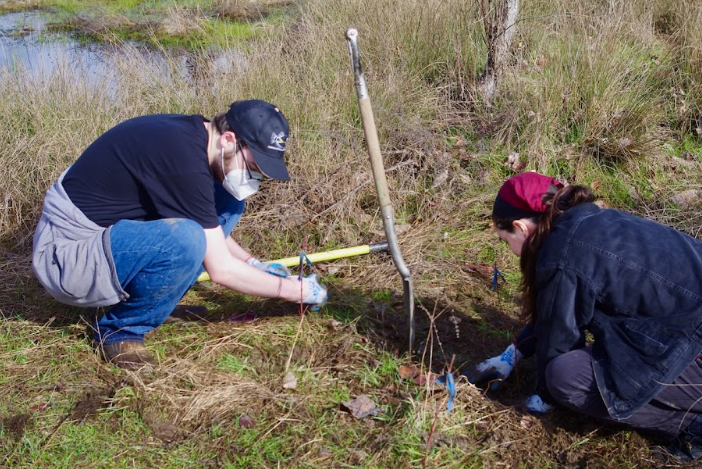
Planting was a two-step process. First, a patch of vegetation was cleared to the soil layer using a grub hoe. Then, with a spade or post hole digger, we excavated holes about a foot deep, too often striking the broken concrete from someone’s family home foundation in Slabtown! We carefully packed down the clay around the plant and tied off a short section of blue flagging to mark the location. Generally, volunteers teamed up in groups of two or three and most reported getting in at least 30 plants apiece.
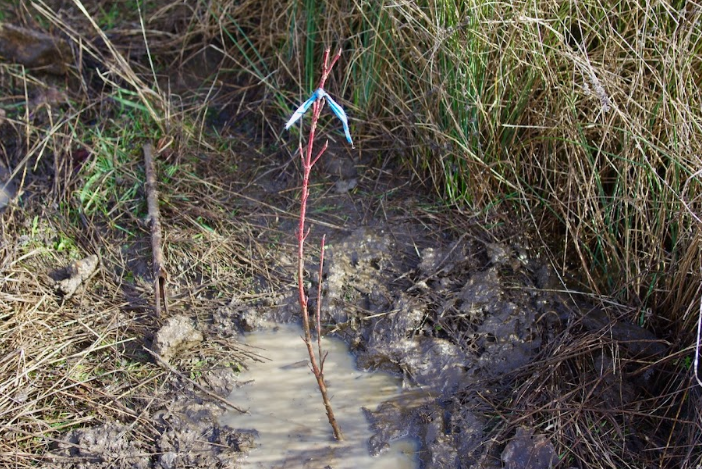
Portland Parks, in addition to supplying all the equipment, always brings snacks and water for volunteers. However, the larger reward was vicariously enjoying the wildlife refuge itself. Volunteers discovered three long-toed salamanders, the aquatic species that thrives in the North Meadow, during the March work party. (Many of them had never seen a salamander in its native habitat before.) A red-tailed hawk wheeled and circled above as it was harassed by a pair of crows. And the park’s herd of black-tailed deer came ambling by as the event drew to a close.
